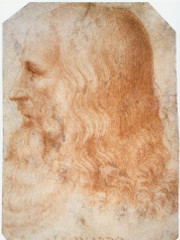
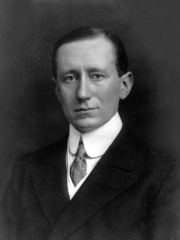
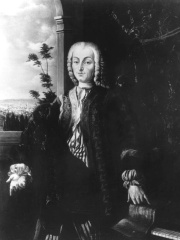
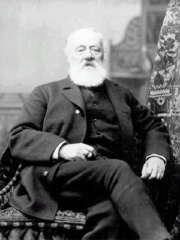

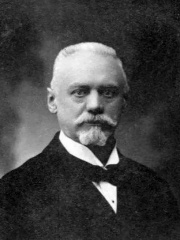
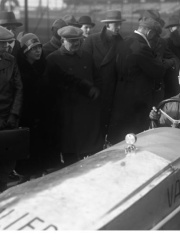
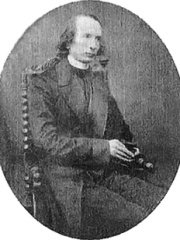
The Most Famous
INVENTORS from Italy
Top 10
The following people are considered by Pantheon to be the top 10 most legendary Italian Inventors of all time. This list of famous Italian Inventors is sorted by HPI (Historical Popularity Index), a metric that aggregates information on a biography's online popularity. Visit the rankings page to view the entire list of Italian Inventors.

1. Leonardo da Vinci (1452 - 1519)
With an HPI of 96.80, Leonardo da Vinci is the most famous Italian Inventor. His biography has been translated into 239 different languages on wikipedia.
Leonardo di ser Piero da Vinci (15 April 1452 – 2 May 1519) was an Italian polymath of the High Renaissance who was active as a painter, draughtsman, engineer, scientist, theorist, sculptor, and architect. While his fame initially rested on his achievements as a painter, he has also become known for his notebooks, in which he made drawings and notes on a variety of subjects, including anatomy, astronomy, botany, cartography, painting, and palaeontology. Leonardo is widely regarded to have been a genius who epitomised the Renaissance humanist ideal, and his collective works comprise a contribution to later generations of artists matched only by that of his younger contemporary Michelangelo. Born out of wedlock to a successful notary and a lower-class woman in, or near, Vinci, he was educated in Florence by the Italian painter and sculptor Andrea del Verrocchio. He began his career in the city, but then spent much time in the service of Ludovico Sforza in Milan. Later, he worked in Florence and Milan again, as well as briefly in Rome, all while attracting a large following of imitators and students. Upon the invitation of Francis I, he spent his last three years in France, where he died in 1519. Since his death, there has not been a time when his achievements, diverse interests, personal life, and empirical thinking have failed to incite interest and admiration, making him a frequent namesake and subject in culture. Leonardo is identified as one of the greatest painters in the history of Western art and is often credited as the founder of the High Renaissance. Despite having many lost works and fewer than 25 attributed major works – including numerous unfinished works – he created some of the most influential paintings in the Western canon. The Mona Lisa is his best known work and is regarded as the world's most famous individual painting. The Last Supper is the most reproduced religious painting of all time and his Vitruvian Man drawing is also regarded as a cultural icon. In 2017, Salvator Mundi, attributed in whole or part to Leonardo, was sold at auction for US$450.3 million, setting a new record for the most expensive painting ever sold at public auction. Revered for his technological ingenuity, he conceptualised flying machines, a type of armoured fighting vehicle, concentrated solar power, a ratio machine that could be used in an adding machine, and the double hull. Relatively few of his designs were constructed or were even feasible during his lifetime, as the modern scientific approaches to metallurgy and engineering were only in their infancy during the Renaissance. Some of his smaller inventions, however, entered the world of manufacturing unheralded, such as an automated bobbin winder and a machine for testing the tensile strength of wire. He made substantial discoveries in anatomy, civil engineering, hydrodynamics, geology, optics, and tribology, but he did not publish his findings and they had little to no direct influence on subsequent science.

2. Guglielmo Marconi (1874 - 1937)
With an HPI of 83.41, Guglielmo Marconi is the 2nd most famous Italian Inventor. His biography has been translated into 117 different languages.
Guglielmo Giovanni Maria Marconi, 1st Marquess ( mar-KOH-nee; Italian: [ɡuʎˈʎɛlmo marˈkoːni]; 25 April 1874 – 20 July 1937), was an Italian radio-frequency engineer, inventor, and politician known for his creation of a practical radio wave–based wireless telegraph system. This led to him being largely credited as the inventor of radio and sharing the 1909 Nobel Prize in Physics with Ferdinand Braun "in recognition of their contributions to the development of wireless telegraphy." His work laid the foundation for the development of radio, television, and all modern wireless communication systems. As an entrepreneur and a businessman, Marconi founded the Marconi Company in the United Kingdom in 1897. In 1929, he was ennobled as a marquess (Italian: marchese) by Victor Emmanuel III. In 1931, he set up Vatican Radio for Pope Pius XI.

3. Bartolomeo Cristofori (1655 - 1731)
With an HPI of 76.05, Bartolomeo Cristofori is the 3rd most famous Italian Inventor. His biography has been translated into 49 different languages.
Bartolomeo Cristofori di Francesco (Italian pronunciation: [bartoloˈmɛːo kriˈstɔːfori di franˈtʃesko]; May 4, 1655 – January 27, 1731) was an Italian maker of musical instruments famous for inventing the piano.

4. Antonio Meucci (1808 - 1889)
With an HPI of 74.80, Antonio Meucci is the 4th most famous Italian Inventor. His biography has been translated into 48 different languages.
Antonio Santi Giuseppe Meucci ( may-OO-chee, Italian: [anˈtɔːnjo meˈuttʃi]; 13 April 1808 – 18 October 1889) was an Italian inventor and an associate of Giuseppe Garibaldi, a major political figure in the history of Italy. Meucci is best known for developing a voice-communication apparatus that several sources credit as the first telephone. Meucci set up a form of voice-communication link in his Staten Island, New York, home that connected the second-floor bedroom to his laboratory. He submitted a patent caveat for his telephonic device to the U.S. Patent Office in 1871, but there was no mention of electromagnetic transmission of vocal sound in his caveat. In 1876, Alexander Graham Bell was granted a patent for the electromagnetic transmission of vocal sound by undulatory electric current. Despite the longstanding general crediting of Bell with the accomplishment, the Italian Ministry of Cultural Heritage and Activities supported celebrations of Meucci's 200th birthday in 2008 using the title "Inventore del telefono" (Inventor of the telephone). The U.S. House of Representatives in a resolution in 2002 also acknowledged Meucci's work in the invention of the telephone, although the U.S. Senate did not join the resolution and the interpretation of the resolution is disputed.
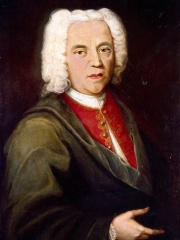
5. Johann Maria Farina (1685 - 1766)
With an HPI of 68.23, Johann Maria Farina is the 5th most famous Italian Inventor. His biography has been translated into 23 different languages.
Giovanni Maria Farina (German: Johann Maria Farina, French: Jean Marie Farina; 8 December 1685 – 25 November 1766) was an Italian-born perfumier in Germany who created the first Eau de Cologne.

6. Ottaviano Petrucci (1466 - 1539)
With an HPI of 62.51, Ottaviano Petrucci is the 6th most famous Italian Inventor. His biography has been translated into 19 different languages.
Ottaviano Petrucci (18 June 1466 – 7 May 1539) was an Italian printer. His Harmonice Musices Odhecaton, a collection of chansons printed in 1501, is commonly misidentified as the first book of sheet music printed from movable type. Actually that distinction belongs to the Roman printer Ulrich Han's Missale Romanum of 1476. Nevertheless, Petrucci's later work was extraordinary for the complexity of his white mensural notation and the smallness of his font, and he did in fact print the first book of polyphony using movable type. He also published numerous works by the most highly regarded composers of the Renaissance, including Josquin des Prez and Antoine Brumel.

7. Angelo Moriondo (1851 - 1914)
With an HPI of 59.13, Angelo Moriondo is the 7th most famous Italian Inventor. His biography has been translated into 21 different languages.
Angelo Moriondo (6 June 1851 – 31 May 1914) was an Italian inventor, who is usually credited with patenting the earliest known espresso machine, in 1884. His machine used a combination of steam and boiling water to efficiently brew coffee.

8. Max Valier (1895 - 1930)
With an HPI of 57.85, Max Valier is the 8th most famous Italian Inventor. His biography has been translated into 15 different languages.
Max Valier (9 February 1895 – 17 May 1930) was an Austrian rocketry pioneer. He was a leading figure in the world's first large-scale rocket program, Opel-RAK, and helped found the German Verein für Raumschiffahrt (VfR – "Spaceflight Society") that would bring together many of the minds that would later make spaceflight a reality in the 20th century.

9. Giovanni Caselli (1815 - 1891)
With an HPI of 54.40, Giovanni Caselli is the 9th most famous Italian Inventor. His biography has been translated into 16 different languages.
Giovanni Caselli (8 June 1815 – 25 April 1891) was an Italian priest, inventor, and physicist. He studied electricity and magnetism as a child which led to his invention of the pantelegraph (also known as the universal telegraph or all-purpose telegraph), the forerunner of the fax machine. The world's first practical operating facsimile machine ("fax") system put into use was by Caselli. He had worldwide patents on his system. His technology idea was further developed into today's analog television. Caselli was a student and professor at the University of Florence in Italy. He started a technical journal that explained physics in layman's terms. For his pantelegraph technology he was awarded the Legion of Honor by Napoleon III of France. Parisian scientists and engineers started the Pantelegraph Society to exchange ideas about the pantelegraph and the associated synchronizing apparatus, in order to get the sending and receiving mechanisms to work together properly.
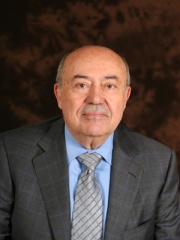
10. Andrew Viterbi (b. 1935)
With an HPI of 54.10, Andrew Viterbi is the 10th most famous Italian Inventor. His biography has been translated into 16 different languages.
Andrew James Viterbi (born Andrea Giacomo Viterbi, March 9, 1935) is an electrical engineer and businessman who co-founded Qualcomm Inc. and invented the Viterbi algorithm. He is the Presidential Chair Professor of Electrical Engineering at the University of Southern California's Viterbi School of Engineering, which was named in his honor in 2004 in recognition of his $52 million gift.
People
Pantheon has 10 people classified as Italian inventors born between 1452 and 1935. Of these 10, 1 (10.00%) of them are still alive today. The most famous living Italian inventors include Andrew Viterbi. The most famous deceased Italian inventors include Leonardo da Vinci, Guglielmo Marconi, and Bartolomeo Cristofori.
Living Italian Inventors
Go to all RankingsDeceased Italian Inventors
Go to all RankingsLeonardo da Vinci
1452 - 1519
HPI: 96.80
Guglielmo Marconi
1874 - 1937
HPI: 83.41
Bartolomeo Cristofori
1655 - 1731
HPI: 76.05
Antonio Meucci
1808 - 1889
HPI: 74.80
Johann Maria Farina
1685 - 1766
HPI: 68.23
Ottaviano Petrucci
1466 - 1539
HPI: 62.51
Angelo Moriondo
1851 - 1914
HPI: 59.13
Max Valier
1895 - 1930
HPI: 57.85
Giovanni Caselli
1815 - 1891
HPI: 54.40
Overlapping Lives
Which Inventors were alive at the same time? This visualization shows the lifespans of the 4 most globally memorable Inventors since 1700.

